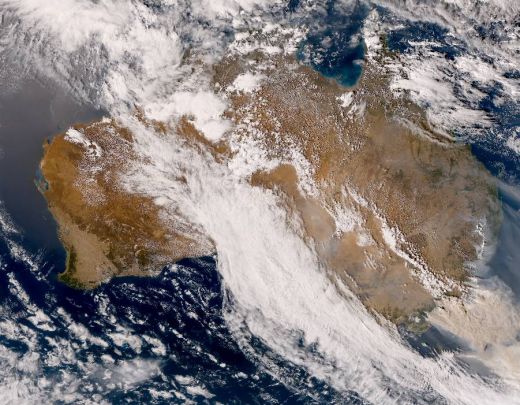
Australia's bushfire monitoring system is unfit for purpose and we need to build a national agency to strengthen our resilience and adaption to climate change, urge a team of leading fire researchers.
In a comment published in the journal Nature, the researchers argue that the magnitude of the 2019-20 Black Summer bushfires – which destroyed more than 3,000 homes and razed 30 million hectares of vegetation – has highlighted the need for a coordinated national approach.
"Australia does not have a central system for gathering and storing essential information about bushfires," University of Tasmania Professor of Pyrogeography and Fire Science David Bowman, said.
"State and territory governments, and even agencies within states, have different approaches. This worked fine when fires were smaller. But those in the 2019-20 season crossed multiple state borders."
With each state and territory recording bushfires in a variety of ways, the lack of consistent data makes it difficult to measure scale and environmental impact accurately.
To determine whether the Black Summer bushfires were anomalous, the researchers used satellite data from the European Space Agency's Fire CCI51 to analyse burnt areas from 2001-2020.
They also analysed the data and written records of all major fires in Australia from 1851 to gain a broader geographical and historical perspective.
The study found that the extraordinary scale and intensity of the Black Summer fires were driven by climate conditions not seen in a century, including three years of drought. Importantly, it also highlighted inconsistencies with the way government records are currently compiled using field observations.
Although the satellite data shows that the extent of the fires was 24 per cent smaller than estimated from government records, the results confirm that fires of that magnitude had not been seen since the mid-19th century.
Almost 20 per cent of Australia's eucalyptus forest coverage burnt – more than 7.5 times higher than the annual average percentage burnt during the previous 18 years.
"The geographic scale, on the back of a series of massive bushfires that have burnt southern Australia and Tasmania since the beginning of this century, eclipsed the worst-case scenarios designed to prepare agencies and communities," Professor Bowman said.
"In other words, we're navigating uncharted territory without a compass. Effective adaptation to extreme events of this sort demands much more detailed description and analysis, and that requires accurate and timely data."
The researchers have called on the Bushfire Royal Commission to recommend the establishment of a national fire monitoring agency to collect consistent information on:
· Fire causes
· Frequency, extent and severity
· Biodiversity and vegetation coverage
· Greenhouse gas emissions
· Smoke and public health
· Economic trade-offs
"The 2019-20 fires marked a historic crossroads. A national crisis of this magnitude, which will probably happen again, requires a national solution," Professor Bowman concluded.
"Wildfires: Australia needs a national monitoring agency" was authored by a team of leading national and international fire researchers: David Bowman, Grant Williamson, Marta Yebra, Joshua Lizundia-Loiola, Maria Lucrecia Pettinari, Sami Shah, Ross Bradstock and Emilio Chuvieco.
Image: The Black Summer bushfires as captured by the satellite Himawari 8. Credit - Japan Meteorological Agency.






